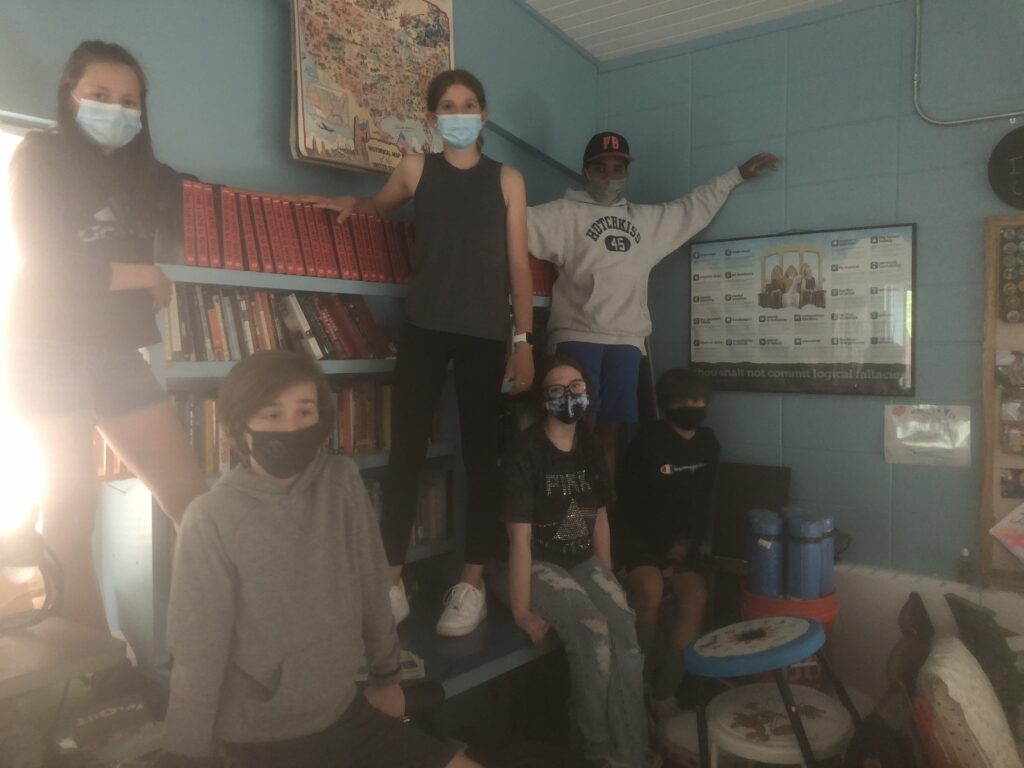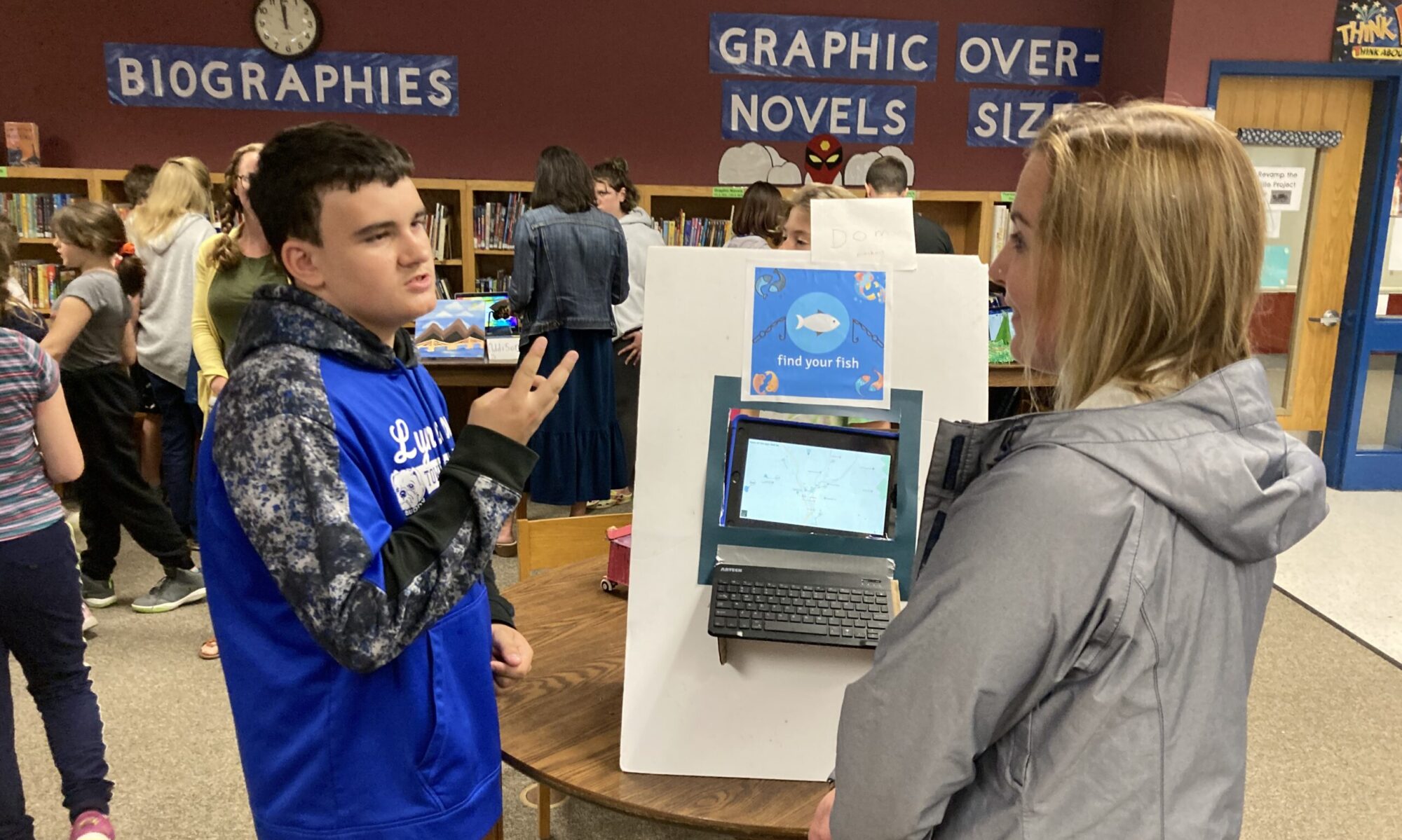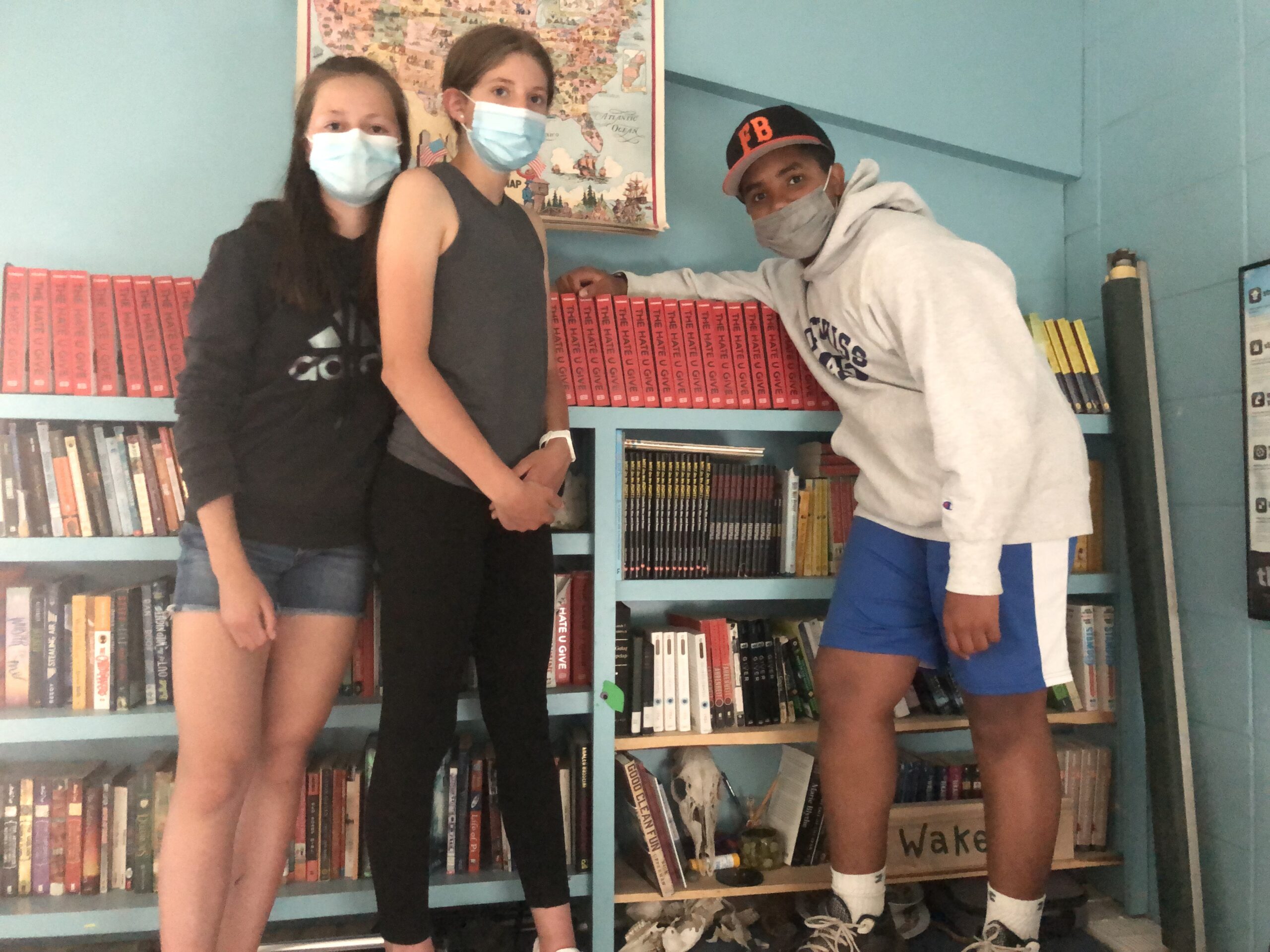Flood Brook School has been talking about a classroom library audit for A LONG TIME. Like, a real long time. It became one of those running jokes in some of our classrooms.
7th and 8th graders talked with teachers about how inclusive (or not) our libraries are, and we always intended to do a formal classroom library audit.
To be honest, a lot of the members of our community didn’t feel like this was a pressing issue. We discussed the matter in class. We focused on identity, power, privilege, and discrimination in middle school humanities. And our school-wide library began a diversity audit last year.
Students at Flood Brook regularly use vocabulary from our humanities course. Whether debriefing team-building games by discussing power and privilege, or critically analyzing school discipline practices by debating how students are treated differently at times for behaving in seemingly similar ways, we talk a lot about identity and representation.
So why not let this one classroom practice slide when there is so much “else” to learn about every day? We’re busy people, right?
Wrong.
Thanks to the supportive push of fellow educators, our class finally made it happen. And did we ever find out how wrong we were!
The Accessibility of Bar Graphs
The classroom library audit at Flood Brook was a natural extension of a year of humanities exploration that spiraled around the core themes of identity, community, and social justice.
With everything going on in an already hectic year of pandemic classroom learning, digging into representation, and exploring the stories that surround us led our class to deeper discussions about the content that we were already learning.
Following a simple bar graph model made the work seem more manageable. And fortunately, it was VERY manageable. But it was also incredibly impactful! (Though if we did it again we would probably follow a more structured approach.)
Here’s what we did:
-
- We began by removing all the books from our classroom library. (Added bonus to all you clutter-busters: this gave us an excuse to clean neglected crannies of our classrooms).
- Students then worked in groups to research the authors we found. What does the cover art and inside cover tell us about the author? What can we find out at their website? And what about quick biographies from trusted sources?
- The next step was to make a simple bar graph of the books based on our findings. Following the advice of rock-star librarian Jeanie Phillips, we made bar graphs by sorting and piling our books for a quick and tangible display of the the makeup of our library.
For our audit we chose to organize our library based on the self-identification of the author.
With that in mind, our next steps were:
Engage in conversation
The class talked about what identities the stories represent in our library. Who was included? Who was left out? And what does it say about which stories are valued?
When students were confused about the background of a writer, we read anything we could about the life of the author. Where did they grow up? What events shaped their life? How do they self identify?
Admittedly, the bibliophiles in our presence were much more into this. They delved further into the conversation to talk about how life experiences may impact the stories each author tells.
Repeat
The research was by far the most engaging part of the process. By focusing on our research and the discussion of it, students made connections between who was well represented and who was in danger of being simplified in the literature of our classroom.
Re-shelve
After a lengthy conversation about which books would go, which books would stay, and where books should go on the shelves, students re-shelved the library.
We donated books that had not been checked out in years. Or we offered them to teachers who had previously expressed interest. In *rare* circumstances, our amazing up-cyclying art teacher recycled them.
The group decided to place newer books on more accessible shelves. They tended to be purchased by student-led orders, recommended by peers, or selected because they contributed to a more inclusive collection. These included stories of joy and strength that helped to expand the horizons of our very white, rural Vermont school.
Many Hands, Light Work
Our advisory has 11 in-person learners, so keeping everyone occupied in a meaningful way took some problem-solving. The group decided to divide and conquer. Throughout the week, students took turns pulling books, researching authors, and re-shelving books.
We found that working in pairs was the most effective way for our group to do this. That way, everyone had a partner to hold them accountable, to ask questions, and to talk about the books as we moved through the audit.
Our Findings on: Gender
Our class decided to sort books based on the gender, race, and country of origin of the author. We found that, even with the bulk of our literature budget in the past few years going towards the purchase of diverse books, the results were similar to other classrooms in our school.
White men overwhelmingly dominated our bar graph.
While we quickly realized that the majority of the books that are currently checked out skew towards authors of color, the resulting change would have had no chance to catch up to the “white man” pile. This pile was literally so tall as to need structural support to plan for its height.
https://twitter.com/FloodBrooktrout/status/1380706981544091648
One student in fact, while placing books atop the highest stack turned around to his classmates. “Oh no, I would hate to think the white males might come tumbling down.” The whole room laughed.
A pause. “No guys, I really meant the books.”
We had built together literal structures holding the literature of white men above others. Meanwhile the class began discussions of the metaphorical (and literal) structures that were proving the same within our curriculum.
We found that while women authors were well represented, women of color were one of the least represented groups in our audit. I have never been so relieved to have started my year with identity work. Discussions of intersectionality became the necessary framework for meaningful discussion in our learning community.
Our Findings on: Intersectionality
To add to the disparity in gendered representation, 8th grader Trinity, an active member of our school’s Gay-Straight Alliance (GSA), noted that queer authors were poorly represented and trans authors were entirely absent.
In fact, as 7th grader Anna noted, “The only historically marginalized group that we have a lot of is women.”
Which brought us back to our discussions about intersectionality from earlier in the year. Our classroom library’s books written by women were almost exclusively written by white women.
The Z Axis of Class Sets
Enter the “Z Axis.”
While we have *a lot* of books written by women, the bulk of them are represented by titles for which we had numerous copies.
The class engaged in a lively debate here. Do we count books twice if we have two copies?
Some of us wanted to tally each title independently. Others thought the total number of copies was more important. After a lively debate and sharing our ideas with another advisory, the group came up with the idea of adding a “Z Axis” to the graph. After all, having full classroom sets of a title clearly communicates someone’s opinion of the importance of that story.
The class ultimately decided to have one copy in each stack, while piling duplicate copies in front of each pile. This way, we were able to see both ways in which our library represented authors of different backgrounds.
One big takeaway here was that white authors were heavily represented in classroom sets. After all, most of these sets were purchased in recent years, by teachers or other professionals in the district. The connection between titles taught through EngageNY curriculum was unmistakable. And while white women represented the largest quantity of books when factoring in classroom sets, the stack of titles written by white male authors still dwarfed them.
In one of the “Most Progressive” Classrooms in our District
The final step for this audit, which was actually the culminating activity for a mini-unit on reflecting on reading revolved around sharing our findings. I challenged students to find a place where they could share their findings with the world.
Students took to our middle school’s instagram account, shared with their families, and even met with our superintendent Dr. Randi Lowe to discuss their findings.
Our superintendent was not surprised to learn about the results of our audit, but we think it’s fair to say that she was disappointed. “If this is what a classroom library looks like in one of the most progressive classrooms in our district, we have to do better.”
Fortunately, the students’ work paid off. Dr. Lowe congratulated the class on their hard work, challenged them to use their findings to create action steps and left us with exciting news. Each wing in our school, in fact every school in the district, has newly dedicated funds to purchase literature that will surround us in stories that better represent the truly complex experiences of humankind on this planet.
Our first action step? Working our way through some of these great book lists/resources and purchasing books that allow for all students to see themselves reflected in our class’s literature.

This blogpost on Flood Brook Middle School was co-authored by Cliff DesMarais, Zola Bruner, and Anna Carson.


